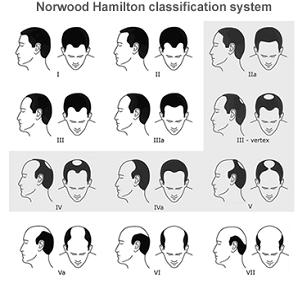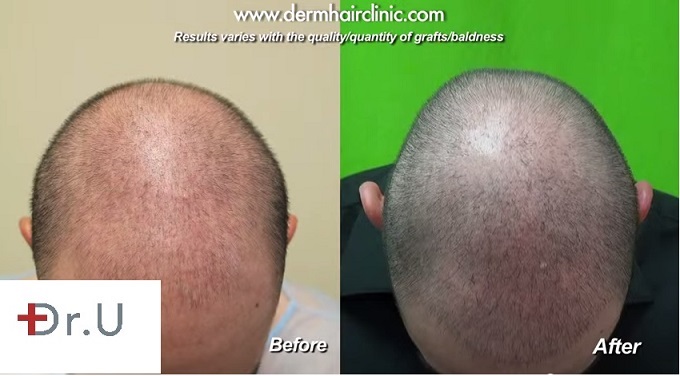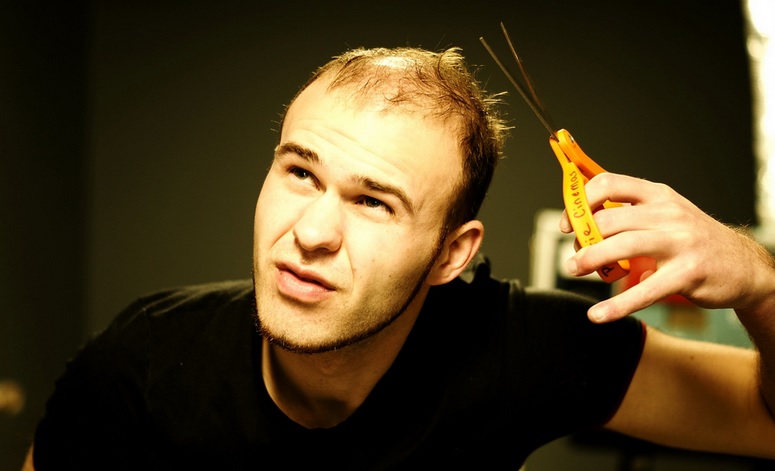
O’tar Norwood, who defined the classification levels on this chart (male patterned alopecia) also identified two other forms of male pattern baldness
(1) diffuse patterned alopecia (DPA) (In which case the horse shoe area is less affected)
(2) diffuse unpatterned alopecia (DUPA) (both the NW areas and the horseshoe areas are affected and hairline may not recede)
Both conditions can also occur in women as well. These forms of hair loss
are characterized by thin, wispy hair shafts as well as reduced density due to the diffused miniaturization of hair follicles from DHT (dehydrotestosterone).
In DUPA, there is no distinct and expanding area of crown baldness. Nor is there a bridge that separates hair loss in the front from the posterior regions of the scalp. Typically these diffusedly balding individuals have poor head donor characteristics making them less than ideal candidate for hair transplantation, which begs the question; what is the role of body hair transplants in diffused alopecia, DPA or DUPA?
Diffuse Thinning DPA VS DUPA: Role of body hair transplant in diffused alopecia
A major differentiating factor between DPA versus DUPA is the density of the horse shoe area. In DPA, this is a stable permanent zone. But in DUPA, this area of hair is far less dense due to miniaturization of the follicles and hair thinning that occurs. This creates a “see through” quality.

DPA and DUPA patients are at risk for shock loss during any type of hair transplant procedures. The follicles of the pre-existing hair in the recipient area become traumatized during the creation of the slits for the donor grafts. There is aso increased risk of shock loss in the donor area during FUE hair transplantation for the same reasons.
However, there exists a possible advantageous role for body hair transplant in diffuse alopecia.
Hair Restoration For DPA and DUPA
Individuals with diffuse patterned alopecia may be interested in knowing the potential role of body hair transplant in diffused alopecia- since they may not qualify for a conventional hair transplant procedure where grafts are derived from the head. This is due to having a stable permanent zone which has not been affected by thinning and miniaturized hair follicles
Traditional surgical hair transplantation for patients with DUPA would most likely not be a feasible option. The vast majority of their head hair could not be used as quality donor grafts.
However, it is possible that a higher proportion of DUPA patients may respond favorably to finasteride.
Basis for a role for body hair transplant in diffused alopecia
- As opposed to head hair, body hair actually thrives on high levels of DHT. It is important to remember that this hair actually develops during puberty when more testosterone is produced. Therefore, the amount of DHT is quite abundant as hair becomes thicker and more abundant on the body
- Thicker beard and body hairs can be selected for transplantation in these individuals to assuage some of the hair volume issues faced by DUPA and DPA patients whose pre-existing hair tends to be of thinner caliber
Thus, if DPA and DUPA patients have sufficient amounts of body hair, these follicles may be used to fill in the sparse thinning areas to achieve a restored appearance with improved density.

